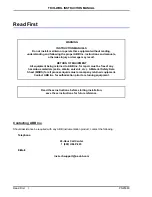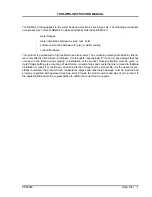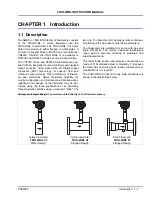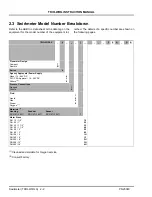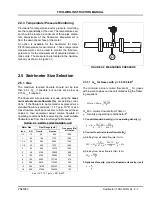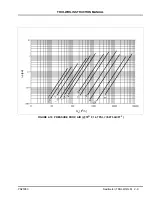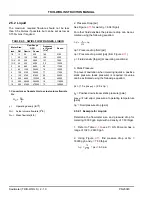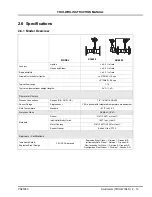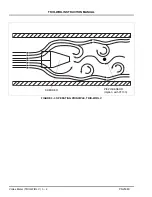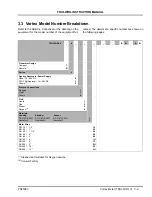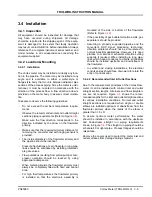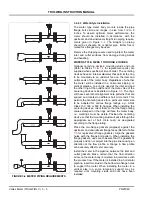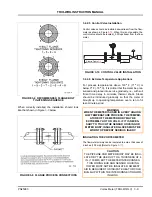
Swirlmeter (TRIO-WIRL S) 2 - 10
PN25080
TRIO-WIRL INSTRUCTION MANUAL
2.5.2 Liquid
The maximum required flowrate should not be less
than 0.5 x Qvmax if possible, but can be set as low as
0.15 Qvmax if required.
1. Convert mass flowrate Qm to actual volume flowrate
Qv
:
ρ
=
Operating density [lb/ft
3
]
Q
V
= Actual volume flowrate [ft
3
/h]
Q
m
= Mass flowrate [lb/h]
2. Pressure Drop [psi]
See Figure
for water (
ρ
= 8.34 lb/gal)
For other fluid densities the pressure drop can be cal-
culated using the following equation:
∆
p’= Pressure drop fluid [psi]
∆
p = Pressure drop water [psi] (from Figure
)
ρ
= Fluid density [lb/gal] (at operating conditions)
3. Static Pressure
To prevent cavitation when metering liquids a positive
static pressure (back pressure) is required. Its value
can be estimated using the following equation:
p
2
≥
(1.3 x p
Vapor
) + (2.6 x
∆
p`)
p
2
= Positive downstream static pressure [psia]
p
Vapor
=Fluid vapor pressure at operating temperature
[psia]
∆
p` =Fluid pressure drop [psia]
2.5.2.1 Example for Liquids:
Determine the flowmeter size and pressure drop for
metering 18000 gph liquid with a density of 7.50 lb/gal.
1. Refer to Table
to see 3”/ DN 80 meter has a
range of 1320 - 26400 gph
2. Using Figure
, find pressure drop at Qv =
18000 gph and
ρ
= 7.50 lb/gal
∆ρ
` =
psi = 6.3 psi
TABLE 2-3. SWIRL FLOW RANGES, LIQUID
Meter Size
Flow Range
GPH
Frequency
at Q
V
max
[Hz]
Re min
Inch
DN
Qvmin
Qvmax
1/2
15
30
420
185
2100
1
25
120
1560
135
5200
1-1/4
32
240
2640
107
7600
1-1/2
40
420
4200
110
13500
2
50
660
6600
90
17300
3
80
1320
26400
78
15000
4
100
2100
39600
77
17500
6
150
4740
97800
50
35000
8
200
6600
132000
30
44000
12
300
26400
264000
16
118000
16
400
47400
475500
13
160000
QV
Qm
ρ
----------
=
∆
p
'
ρ
8.34
----------
∆
p
×
=
7.5
8.34
----------
7
⋅


